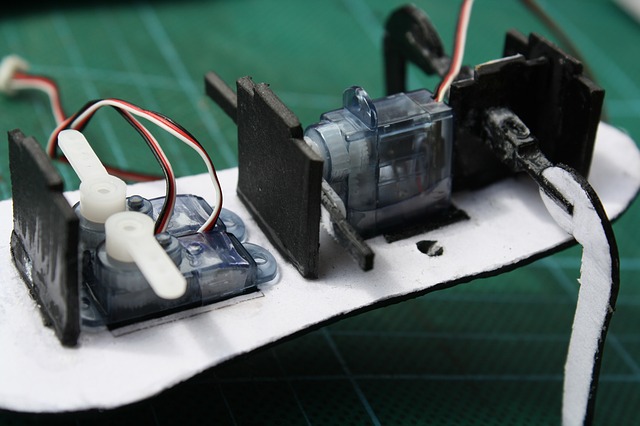
Actuation is the function that breathes life into the mechanism of a robot. Without motors, the robot will remain an immobile piece of electronic device covered by metal or plastic. Robotic functions such as movement, rotating joints, or activating end effectors to interact with the environment are controlled by actuators. Motors are crucial to the success of any robotic project, be it a functional machine or a robotic product. That is why it is essential to choose the right motor for your robotic device.
More on actuators in robotics.
There are so many robotic actuators in the marketplace. Therefore, making a choice for the right one can be overwhelming. However, the design of these motors varies, and their operating principles are not the same. But the vast majority of incorporate either Pneumatic, Hydraulic, or Electric actuation mode of actuation. For professional advice, visit this site.
In pneumatic actuation, the power of compressed air is applied to achieve motion. As a result of the minimal moving parts, these types of engines tend to be reliable, they are also inexpensive and responds quickly. But the downside of this actuation method is its substandard speed precision and position control. This type of mechanism is often applied in on-off, or pick and place robotic applications.
The Hydraulic drives are essential for a project where the robot has a large size or intends to handle large payloads. The hydraulic mechanism works by applying pump action to make fluid energy perform mechanical action. The advantage of the hydraulic mechanism is that it has accurate velocity, improved mechanical coordination, and sufficient power-to-weight ratio. On the other hand, they tend to be noisy and bulky. Moreover, the risk of leakages cannot be overruled, the service fluid can also change its mechanical properties at various temperature.
Electric motors are electromechanical devices that function by converting electrical energy into mechanical energy to produce the desired motion. This type of actuator is preferable in robotics projects. Here are a few factors that make it superior to other types of robotic actuators.
- There are various sourcesof electricity.
- The mechanisms can be used for robots of all sizes.
- The size is compact and lightweight but has a high-power conversion ratio, superior accuracy, and repeatability.
- The likelihood of leaks from pollution does not exist.
- These types of actuators are strong, and the maintenance procedure is easy.
In spite of the many advantages, the electric motor still has safety limitations that discourage its use in an environment with explosives. And it requires a complicated command system to control its movements.
Electric Engines
Taking a closer look at electric actuators, one will still see further complications. Sor instance, they still have additional subtypes which include Servos, Steppers, Alternate current (AC) Engines, and Direct Current Mechanisms, and many more.
AC Drives: The electrical actuators that make use of alternate current are called AC drives. These can either be synchronous or asynchronous. For the synchronous type, the rotation of the AC mechanism synchronizes with the frequency of the AC line. This type of device is mostly used in machines that demands consistent and precise velocity output. On the other hand, asynchronous devices use electromagnetic induction. In essence, an alternate current is passed through the stator winding, thereby causing an electromagnetic field which forces the rotor to shift.
Synchronous and asynchronous motors are rarely used in robotics due to their large dimensions. Their use is more or less restricted to large scale industrial application that requires a large amount of torque or a direct connection to an AC current.
DC Engines: These types of actuators make use of direct currents, such as batteries. And they vary extensively in terms of size and voltage requirements. They function perfectly over a wide range of velocity and load range. Besides their fast response, they also use simple control systems that control smooth acceleration and direction. There is no need for complicated switching arrangements.
DC actuators give a high-speed output, but the torque is normally low. That is why a gearbox is usually incorporated in the DC motors of applications that need to carry heavy loads. Gears cause a reduction in the rate of rotation but increase the torque.
It is essential to design the gearbox so that it works with the drive components to operational issues and the need for customization. That is why it is advisable to purchase a motor that has a gearhead integrated out of the box.
The DC motors are in two categories, which are brushed and the brushless models. Brushed DC engines have brushes and commutators that carries current from the source to the armature located at the device core. These types of actuators are inexpensive and very common in the market. The downside of brushed actuators is that they are noisy and do wear with time, causing a decline in performance.
Brushless DC mechanisms are highly reliable and are notable for their extended service life. In contrast to the brushed models, they are less noisy, more efficient, and are less disposed to wear. On the other hand, the brushless devices are more expensive, they also require convoluted motion design to replace mechanical commutation.
Servos make use of a closed-loop control system that has a controller and a feedback mechanism. These features enhance superior movement programming and real-time error corrections.
The under-listed are the advantages of using motors in robotics.
- Exact Positioning is achieved because the coordinates of the servo are controlled by series of commands
- Low space requirement, yet able to generate high torque.
- Energy efficiency is enhanced as it does not consume power when idle.
The downside is that these actuators are expensive, and require complicated control logic and fine-tuning.
The RDrive is a comprehensive motion solution that consists of our custom-designed frameless AC drive, a strain-wave gearhead, a controller, ad two absolute magnetic encoders. These servo actuators have a small size, but their functions are parallel to the best models in the market. For instance, the motion accuracy of the RDrive is 0.1mm and the angular precision of 0.01 degrees, such features makes your robot a powerful tool.
Steppersderives its name from the way it operates. It facilitates motion rotation in “steps,” which is equivalent to a certain number of degrees. This feature allows for precise positioning, and high holding torque, even at low velocities. Closed-loop controls are not required because these actuators move in steps. The extent to which a motor has shifted can be determined by counting the number of steps pulses.
Although, its speed is closer to the maximum velocity ratings, its torque output low compared to that of a servo. Steppers consumes power at all times, even when it is in standby mode, and has a tendency to miss steps when it is overloaded. It might be difficult to determine the starting angle of steppers after de-energizing the drive.
Bio motors are made from shape memory alloys, they have innovative actuator features in terms of perspectives. It’s working procedure can be compared to a metal wire which shrinks when voltage is applied and is restored to its initial length after powering it off. This result in silent and smooth motion.
Tips for selecting robot motors
The tasks of choosing the right robot motor among varieties can be challenging. An easier way to face this task is to start with questions.
What features do you want in a robot?
For instance, you may want a small-sized robot that has a high torque. Speed is not essential, but positioning must be very accurate.
Why do you need these features?
You may be looking at small businesses as the ideal customer for your robot. These types of businesses have limited space and budget. They will need a robot to perform some repetitive tasks more efficiently than humans. Once you have outlined the big picture, use it to determine the type of features your robot motor should have. Here are some focal points to consider.
Load: The right drive should produce enough torque to move the required payload and also overcome any force that affects the mechanism during motion.
Velocity: The right motor should keep the robot in motion at the rate required to perform the intended tasks such as moving an object to a distance.
Accuracy: Determine if the actuator can handle the positioning precision required to perform the task.
Repeatability: The robot should reach its commanded position repeatedly, at the right time, and with precision.
Reliability: There is a need to determine if the motor uses wearable parts, the average time between failures, and/or the service life it guarantees.
Power efficiency: Determine the source of power to your device (is it AC or DC?) and its rate of power consumption.
Cost: More often than not, the price of a product is parallel of the quality. But if an inexpensive hydraulic motor will serve your objectives, do not go for expensive servos.
Form factor: It is essential to ensure the servo is perfect for the design and size of the robot/components. Else, you may have to consider customization.
The recommendations above are valuable for creating your unique checklist for selecting the right robotic motors. You can contact us for more information on the ways RDrives can enhance your robot project.










![Watch Video Now on xiaohongshu.com [以色列Elevatione perfectio X美容仪 perfectio X 全新仪器黑科技了解下]](https://www.techburgeon.com/wp-content/uploads/2019/07/perfectiox-singapore-150x150.jpg)
